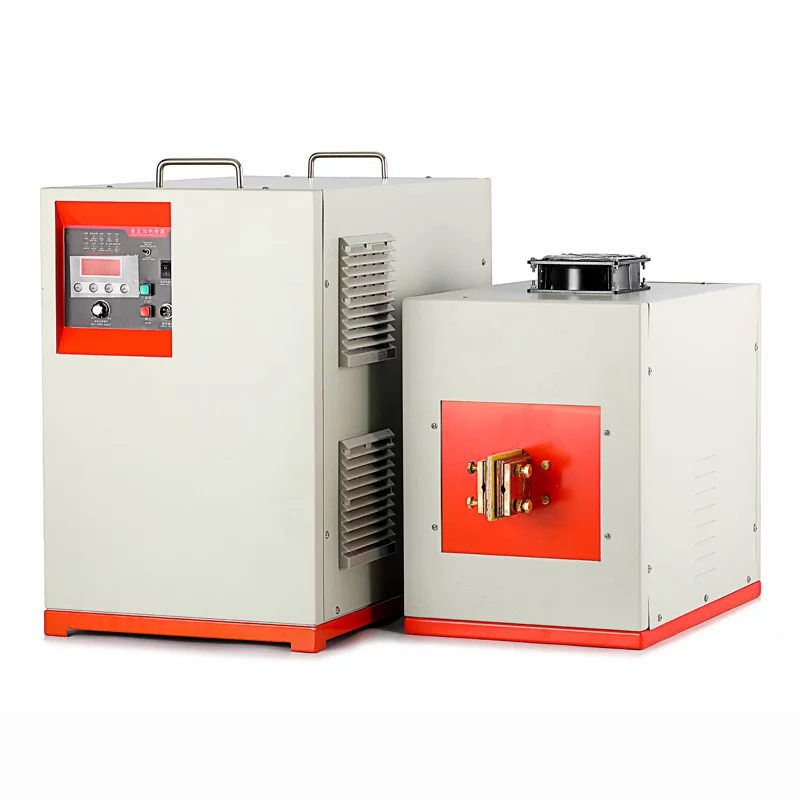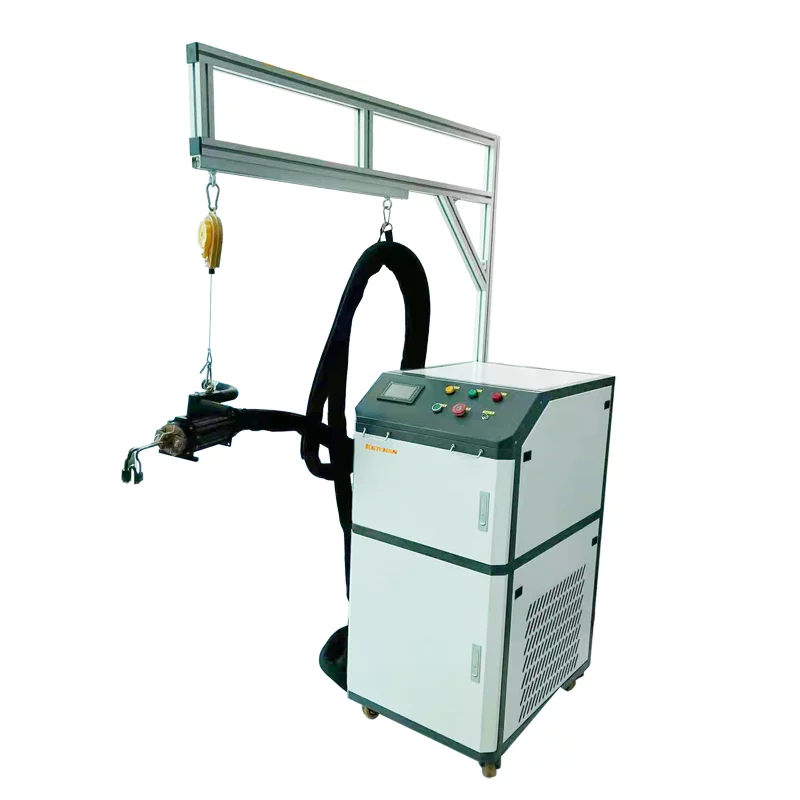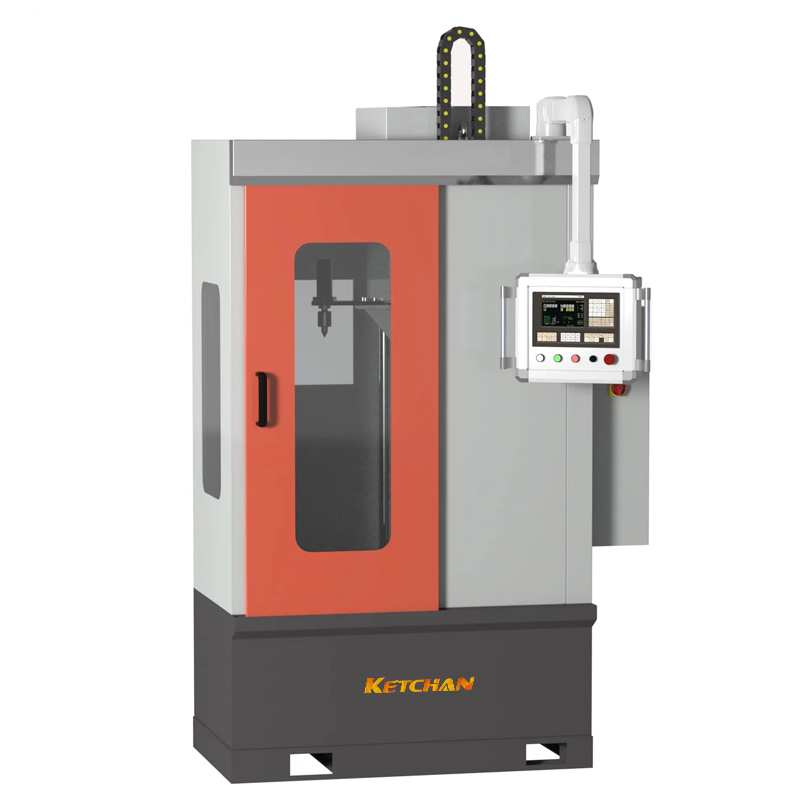The main factors affecting induction brazing are as follows:
1. Stability and accuracy of induction power supply equipment
1) Equipment power control accuracy
Usually, induction heating power supply output and control by the way of current and power, which directly affects the stability of induction heating is the output precision of induction heating power supply.
2) Cooling water temperature
The cooling water temperature here refers to the cooling water temperature that flows through the induction power supply and cools the IGBT control board or main board of the induction power supply using the water-cooled structure. The increase of water temperature will result in abnormal operation of some components inside the induction power supply and increase fluctuation of power supply output, thus affecting the brazing heating effect. Generally, the water temperature should not exceed 35℃.
2. Stability of input power supply
The stability of the input power supply mainly refers to the stability of input voltage and frequency voltage. Induction heating power supply, each has its design allows the working voltage or frequency range, when the input voltage or frequency exceeds the range of induction power supply design value, the power supply itself may appear output volatility, abnormal work and equipment impact damage, such as fault, therefore in the induction brazing, quantitatively monitoring at the input voltage and frequency, prevent abnormal.
3. Induction coil design and structure
In order to realize the core part of the welding parts to be heated, the induction coil, to some extent, is the most important factor related to the uniformity of the induction heating temperature of the workpiece and the flow filling quality of the filler metal in the clearance. Therefore, special care must be taken when it comes to the design and structure of the induction coil.
1) Induction coil structure
In order to obtain the best temperature uniformity and heating effect, a special induction heating coil should be designed and manufactured according to the structure and shape of the heated workpiece and the size of the joint.
A: Uneven induction heating with equal pitch
The improvement method is as follows: B: Increase the middle pitch distance; C: Change the coupling distance;
D: Make the length of the induction coil larger than the length of the workpiece heating area
2) Size of induction ring
The size of the inductor includes copper tube material, pitch, and inner diameter for winding the coil. The basic principles of the inductor design are as follows:
Ø heat only happens near the sensor, the sensor should only be surrounded the part of the workpiece to be heated;
Ø closer to the surface of the workpiece, the induction coil, the heating time. Therefore, the heating rate can be adjusted by changing the coupling.No contact between the sensor and the workpiece;
Ø in the induction coil, number of turns for uniform heating, turn-to-turn distance (pitch) should be minimal, but they were not allowed to come into contact with each other;
Ø induction coil should have most of the turns and workpiece size, shape, and should be able to obtain the required heat distribution.
4. Consistency of workpiece incoming size
1) It involves the dimension consistency of brazing joint clearance machining
Brazing joint clearance is the most important size related to brazing joint, which is directly related to the flow of brazing filler metal and the formation of weld seam during brazing. Because induction brazing usually adopts automatic welding, the filler material is added in a quantitative manner such as welding ring, filamentous, flake, or paste.
If the joint clearance increases, the following problems may exist during brazing:
Ø capillary force is reduced, solder flow gap-filling ability weakened;
Ø clearance increases are not conducive to heat conduction or heat transfer between the two matrix metal, not easy to heat evenly;
Ø clearance increases, quantitative filler metals are unable to completely fill the gap, easy to form the appearance of virtual welding defect;
Ø increase the possibility of the matrix metal is exposed to air, the severe oxidation problems.
If the joint clearance decreases, the following problems may exist during brazing:
Ø solder flux can’t completely fill the joint clearance, unable to form high-quality connectors;
Ø gap decreases, and can lead to difficult assembly, production efficiency is low;
Ø gap decreases and may lead to a weld flash rough appearance.
Therefore, in high-frequency induction brazing, welding clearance must be strictly controlled (especially for automatic brazing), and the joint clearance deviation should not exceed ±0.03mm, which can meet the requirements of batch induction brazing.
2) Consistency of workpiece thickness and size
The thickness of the workpiece is directly related to the heating efficiency of the workpiece. The thickness deviation of the heating part of the workpiece should not exceed ±0.3mm.
5. The material composition of the parts to be welder is consistent
For welding workpieces of resistivity changes with the composition of different, in the case of workpiece shape and size is consistent, such as severe fluctuation of the composition of the workpiece, can lead to artifacts resistivity volatility, and the induction heating depends on the metal itself resistance brazing fever heat, the higher the resistance, the higher the heating efficiency, the faster the heating rate, the child is lower, the composition of fluctuations can cause metal resistance, which will directly affect the control of the induction heating parameters and process, especially for the automatic induction brazing process and quality control is very bad, so we should treat the consistency of the welding workpieces material components to ensure avoid large fluctuations in composition.
6. Brazing filler metal
1) Brazing agent composition grade
The brazing agent composition and brand are directly related to filler and joint performance, etc. The best brazing agent is available for different base metals to obtain the best brazing effect and quality. For this part, please refer to relevant articles on brazing agent selection published in this public account.
2) Brazing flux (liquid, powder, paste)
Liquid brazing agent is preferred in induction brazing because liquid brazing agent can be more evenly added in the metal matrix and joint clearance, it can better and more evenly cover the metal surface of the matrix, and the adding position is more easily guaranteed to obtain the best brazing agent effect.
For the filler metal, a filler metal form suitable for automatic addition (such as paste) is preferred to ensure the consistency of the filler metal relative to the base metal workpiece.
3) Adding method of brazing agent
The automatic adding method is preferred to ensure the quality of brazing meets the requirements.
7. Brazing parameters
1) Parameter setting mode
The corresponding parameters shall be set according to the properties, operating temperature and special joint requirements of the base metal and the brazing agent.
2) Parameters of different manufacturers
For most companies, the same workpiece several suppliers are used for each supplier are different raw materials and processing technology, etc, workpiece material, composition and performance differences, induction heating, the heating workpiece is different, different manufacturers, therefore, induction heating parameters of the workpiece is different, so the different manufacturers should set different parameters of the workpiece, validation should be carried out according to specific artifacts.
8. Pre-welding of workpieces
Before welding process of the workpiece, before welding process is the same with other brazing methods, its purpose is to eliminate the matrix metal affect flow filling solder wetting the surface of the debris, such as oxide impurities, rust, oil, and reduce the surface tension of the metal substrate, the substrate metal surface conducive to the rapid flow of the molten solder.
9.Maching jig for the induction welding machine
1) Repeatable positioning accuracy of the fixture
The main purpose of the fixture is to ensure that the heating part of the workpiece is stable relative to the inductor, the workpiece is assembled in the center, and the clearance is even. The workpiece heating temperature and the speed of heating speed are greatly related to the distance between the workpiece and the inductor. The closer the distance is, the faster the heating speed will be. The farther the distance is, the slower the heating speed will be. Therefore, the repeatable positioning accuracy of positioning tooling has a great impact on the uniformity of the induction heating of the workpiece. Generally, the repeatable positioning accuracy of tooling is higher than ±0.5mm, which can avoid the impact on heating.
2) Fixture reliability
In the process of induction heating, when the inductors heat the workpiece, they will heat the fixture synchronously. Therefore, in the design of the fixture, the influence of induction heating on the fixture should be considered in advance to prevent deformation or failure of the fixture, resulting in the failure of the fixture’s positioning accuracy.
3) Influence of fixtures on induction heating
Ø positioning fixture materials
Ø positioning jig and the distance of the sensor
Ø tooling temperature cooling
10. On-site operation
Operators should master the basic knowledge of induction brazing and be familiar with the factors affecting the quality of workpiece induction brazing. During brazing operation, operators must operate in accordance with the quality of brazing so as to ensure the quality of brazing.






